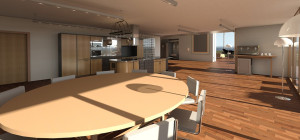 Technology has turned out to be one of the most significant aspects of the real estate industry. With the evolving customer demands, real estate marketers are increasingly using the tools of technology to meet customers’ requirements and exceed their expectations.
Technology has turned out to be one of the most significant aspects of the real estate industry. With the evolving customer demands, real estate marketers are increasingly using the tools of technology to meet customers’ requirements and exceed their expectations.
The right tools help promote the properties, showcase them to the customers and also help in identifying and rectifying faults even before the construction process starts. In addition to that, these tools can also help both, clients and marketers to convey their ideas to each other without any scope of miscommunication or misrepresentation. As a result, they quicken the decision-making process considerably.
Let’s take a look at some of the tools that have been instrumental in the real estate industry.
Interactive Floor plans
Floor plans are designed to make the clients aware of how the home is laid out. Interactive floor plans are more than just blueprints. These are created with the help of 3D mapping technology that enables potential buyers to view the basic interior of the house in 3D. Clients can easily navigate through the entire floor plan and view it from different angles. This provides users complete information about the interior before the construction process begins.
Virtual Tours
Virtual tours are simulations of a certain location which are created by stitching together a sequence of images and videos. In these tours, you can also include certain multimedia effects like sounds, text, etc. with the help of a real estate online video editor to make them even more interesting.
Virtual walk is a type of a virtual tour which is like a motion picture that has been shot as the camera moves along the area of the property. These walks show clients the sounds that they would hear and the sights that they would see as they walk towards the property and through it.
These virtual tours are quite easy to create and showcase a complete visual information to buyers. These tours can be shared easily.
Drone Photography
Drones are becoming increasingly popular in real estate over the years. These flying machines can capture high-quality images of the property from various angles. The pictures captured help in showcasing the surroundings of the property. The aerial photos and videos of the property captured by the drones provide a 360-degree view, thus making the purchasing decision easier for buyers.
“Drones already are part of our world,” Pasadena agent, Steve Clark pointed out, “If you’re not hiring a drone operator that is top notch, then you’re losing and more importantly, your client is losing.” He also added, “There’s a way to tell the story, and I think the drones have captured that.”
Obtaining photographs and videos by this procedure isn’t an easy feat for professional photographers since these photographs cover shots from various angles, both low and elevated. These photos can enable clients view the layout of the property in addition to the neighbourhood and the amenities nearby.
3D Rendering
3D renderings of properties make the idea and the information more real and tangible even before construction begins. Instead of showing just a photograph, 3D renderings provide a more in-depth insight into a property to the buyers. A 3D property view through architectural visualisation eliminates any doubts that customers may have regarding the property.
In addition to that, these renderings also help in identifying any faults with the plan. Consequently, these mistakes can be rectified at the initial stage. This saves money and time for the architects. These renderings also make presentations more appealing and accelerate the decision-making process of buyers.
With the help of 3D renderings, architects can also experiment with lighting ideas to ensure that the final product is foolproof.
Virtual Reality
The implementation of virtual reality in real estate has made headlines owing to the many benefits. Virtual reality helps in providing interactive property viewing experiences by placing the viewer inside the property. Customers can navigate through the property and view it from different angles.
“Virtual reality has been a big piece of early sales,” real estate agent Julie McEvoy pointed out, “Being able to see and experience the space is huge. The technology doesn’t replace a salesperson’s explanation—a first-time buyer still needs to be talked through the details—but now you can show them.”
Information shared by iCreate3d







